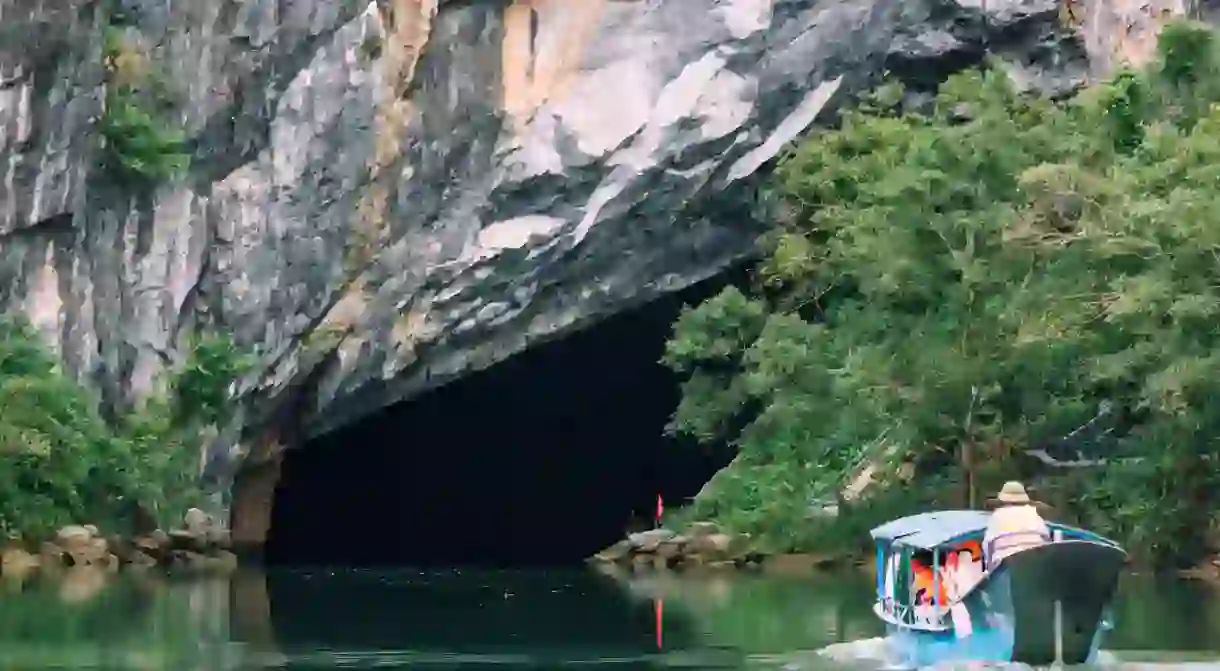Exploring Vietnam's Phong Nha Cave

In the center of Vietnam, on the border of Laos and in the midst of the Annamite mountain range, sits one of the most pristine pieces of jungle left in Southeast Asia — Phong Nha-Kẻ Bàng. The national park and UNESCO World Heritage site is home to some of largest caves in the world, hollowed, eroded and split open over millions of years.
Phong Nha-Kẻ Bàng
It would be difficult to find anywhere in the entire nation of Vietnam an area more well-preserved and wild than Phong Nha-Kẻ Bàng National Park. There’s no litter, no gaudy construction projects and no sense of rapid development that’s prevalent throughout much of the rest of the country. Instead, there’s nature. Vast and uninterrupted limestone peaks soar to the horizon. Dense jungle canopy clings to rock walls, climbing thousands of feet into the sky. The roar of motorbikes succumbs to the cacophony of birds, monkeys and langurs singing in the safe confines of the forest. Cave systems run for hundreds of miles through and beneath the limestone giants overhead. Some are more expensive and difficult to reach, others are cheaper and easier to find. Phong Nha Cave is perhaps the easiest to access and one of the most stunning.


Tickets
Phong Nha cave is accessible by boat from the tourist center in Phong Nha town. Tickets need to be purchased for the ride and the cave itself, luckily both are relatively cheap and the process is straightforward and simple. Entrance to the cave is 150,000 VND and the boat 360,000. However, to make things cheaper for yourself, it’s important to wait around the ticket booth until some other travelers approach and then purchase your boat tickets together. They allow up to 14 in one boat so the price can fall dramatically depending on your group size.


The ride
The ride to the cave takes 15 or 20 minutes along the Son River on one of the many wooden boats. It’s a peaceful experience sliding slowly across blue-green waters toward the park as small towns and steeples fade from view, replaced by karst walls and blanketing jungle flora. The river ambles by, snaking between peaks and thick foliage that runs to the water’s edge. Several smaller caves are visible high up on the exposed limestone mountainsides. As the boat turns round one final bend, a massive rock wall appears in the distance and the cave opening comes into view.

Into the abyss
As the boats reach the caves they queue up, entering only one or two at a time. Engines die and the operators drag them along with long poles, slowly and methodically spearing them into the murky water. Once past the entrance, the immense cavern opens up. Giant stalactite chandeliers hang down from the ceiling. Without prodding or asking, everyone falls silent as eyes gaze up and the stone cathedral’s grandeur spills out. It’s a spectacular sight. Flood lights have been tastefully hidden throughout the first kilometer or so, illuminating other-worldly limestone structures. After 20 minutes the boats reach the end of the area you’re allowed to explore and turn back.

Exploring on foot
Before exiting the cave, each boat pulls to the side toward a sandy beach. Passengers are able to depart and walk, surrounded by 400 million-year-old sculptures. Limestone twists and turns all around, fascinating patterns fall from the walls – some so perfect it’s hard to believe they’re not man-made. After walking the last 100 meters toward the cave’s opening, a staircase leads out and up toward some shops and a dock where the boats reconvene.















